In the summer of 1989, NASA’s Voyager 2 became the first spacecraft to fly by Neptune, its final planetary encounter. Managed by the Jet Propulsion Laboratory in Pasadena, California, Voyagers 1 and 2 were a pair of spacecraft launched in 1977 to explore the outer planets. Initially targeted only to visit Jupiter and Saturn, Voyager 2 took advantage of a rare planetary alignment that occurs once every 175 years to complete two additional encounters in the outer solar system. In January 1986, Voyager 2 became the first spacecraft to investigate Uranus and used that planet’s gravity to alter its trajectory to explore Neptune, the outermost planet of the solar system. Because of Neptune’s great distance from the Sun, engineers made changes to Voyager’s imaging techniques to accommodate light levels only 3% of what they were during the Jupiter encounter. Short exposures were on the order of 15 seconds while longer ones were measured in minutes. Image motion compensation techniques were programmed into Voyager’s computer to maintain clear photographs at those long exposures coupled with the spacecraft’s velocity. NASA also upgraded the tracking antennas of the Deep Space Network to increase their sensitivity to receive Voyager’s signals from Neptune’s distance. Because of its remoteness, relatively little was known about Neptune prior to the Voyager encounter. It had two known moons, the larger Triton orbiting relatively close to the planet but in a retrograde direction, indicating it might have been captured by Neptune, and tiny Nereid in a far-flung but posigrade orbit. Observations from Earth seemed to indicate that Neptune was encircled by dark rings or ring arcs, but the evidence was inconclusive.
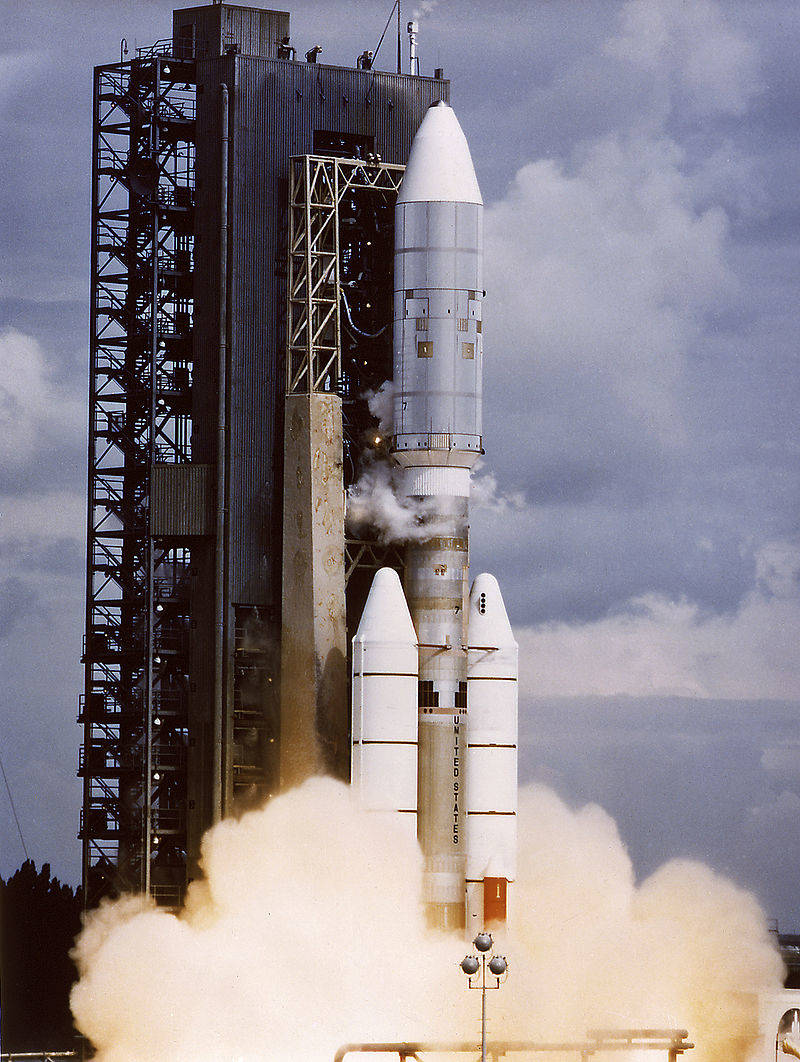
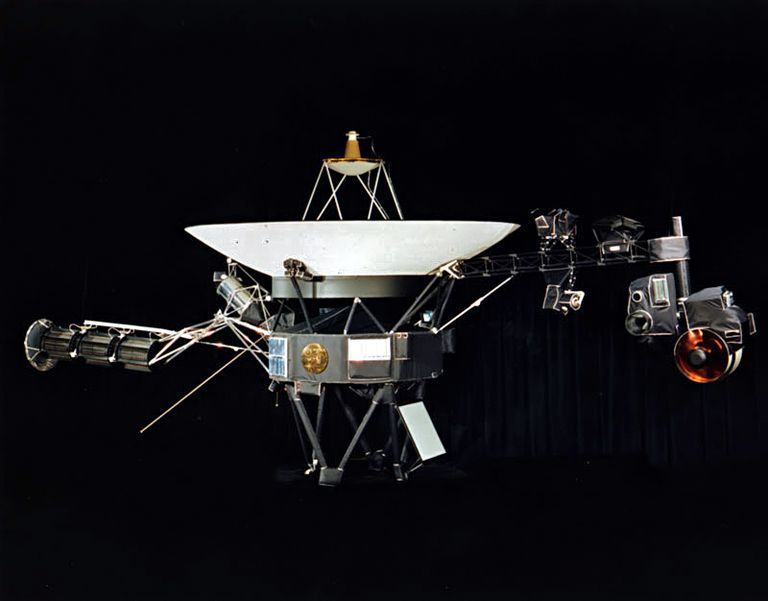
Left: Launch of Voyager 2 in 1977. Right: Model of the Voyager spacecraft.
Each Voyager carried a suite of 11 instruments, including:
- an imaging science system consisting of narrow-angle and wide-angle cameras to photograph the planet and its satellites;
- a radio science system to determine the planet’s physical properties;
- an infrared interferometer spectrometer to investigate local and global energy balance and atmospheric composition;
- an ultraviolet spectrometer to measure atmospheric properties;
- a magnetometer to analyze the planet’s magnetic field and interaction with the solar wind;
- a plasma spectrometer to investigate microscopic properties of plasma ions;
- a low energy charged particle device to measure fluxes and distributions of ions;
- a cosmic ray detection system to determine the origin and behavior of cosmic radiation;
- a planetary radio astronomy investigation to study radio emissions from Jupiter;
- a photopolarimeter to measure the planet’s surface composition; and
- a plasma wave system to study the planet’s magnetosphere.
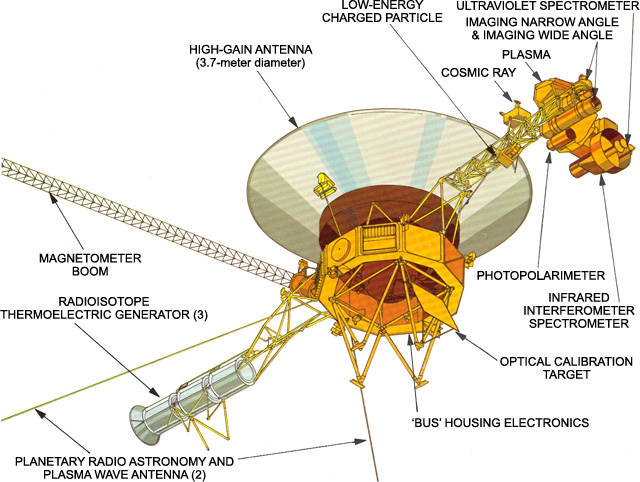
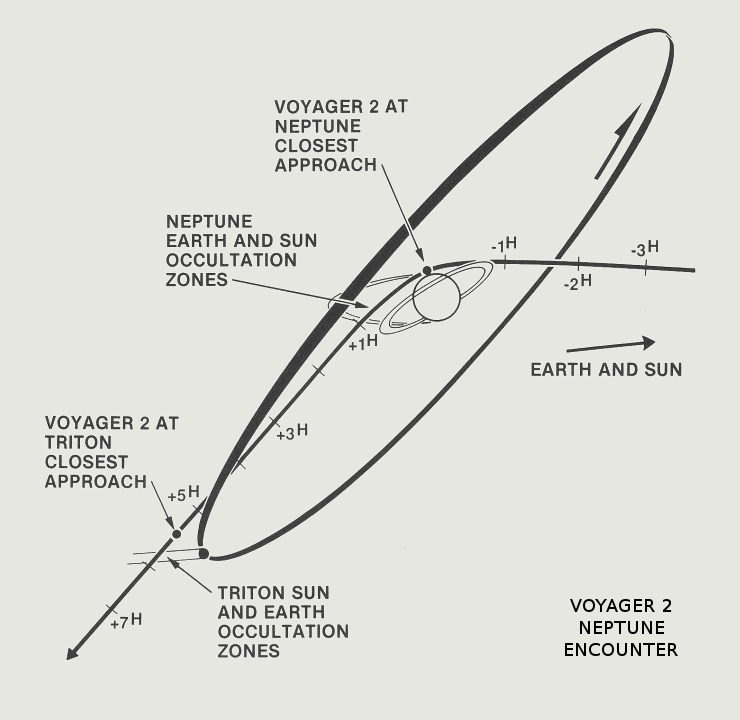
Left: Illustration of the Voyager spacecraft depicting its science instruments.
Right: Trajectory of Voyager 2 through the Neptunian system.
Voyager 2 began to observe Neptune on June 5, 1989, at a distance of 73 million miles. Even at this range, Voyager’s images were already four times better than those obtained by Earth-based telescopes. It soon made the first of its many discoveries of the encounter: the moon later named Proteus orbiting about 73,000 miles from Neptune, and with a diameter of 260 miles actually larger than the known moon Nereid – it is not clear how it had escaped detection by Earth-based telescopes. By early August, Voyager 2 had discovered three more small moons (Despina, Galatea, and Larissa) orbiting closer to the planet than Proteus. Larissa had been spotted in 1981 but Voyager 2 confirmed its existence. The photographs of Neptune revealed a dynamic atmosphere including an Earth-sized storm system named the Great Dark Spot and wind speeds reaching up to 1,000 miles per hour. Voyager returned the first images of Neptune’s rings which turned out to be a system of five rings composed mostly of dark dust and discovered two more small moons (Thalassa and Naiad). Like at Saturn and Uranus, the rings and four of the moons at Neptune form an intricate interrelated system. The spacecraft also imaged Neptune’s previously discovered moon Nereid at low resolution from about 3 million miles away. Voyager discovered that Neptune’s magnetic field was not only tilted 47o from the planet’s axis but also significantly offset from the planet’s center.
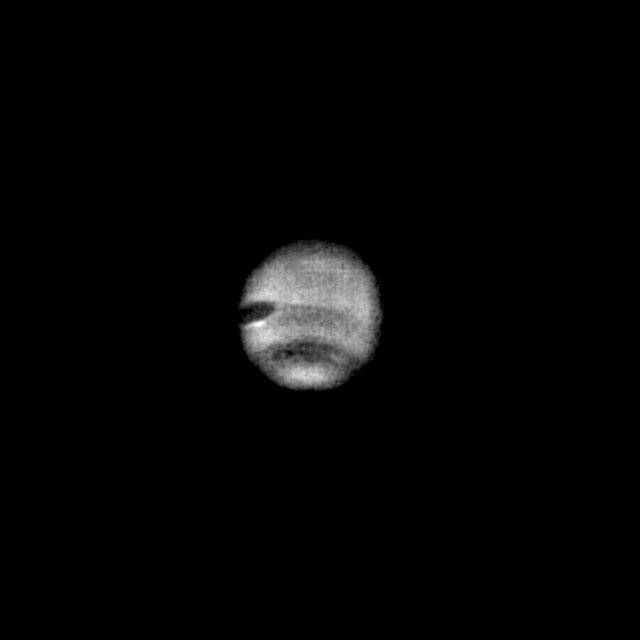
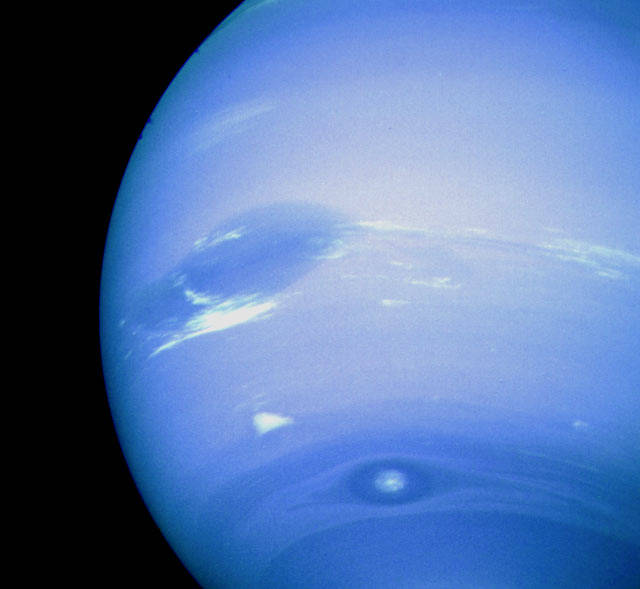
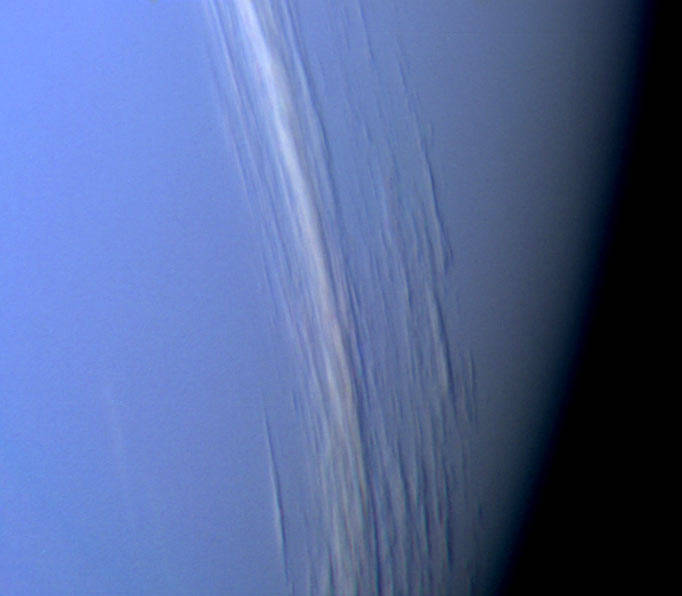
Left: One of the early images of Neptune taken when Voyager 2 was still 35 million miles away.
Middle: Voyager 2 image of the Neptune’s Great Dark Spot. Right: Voyager 2 image of high-altitude cloud streaks in
Neptune’s atmosphere.
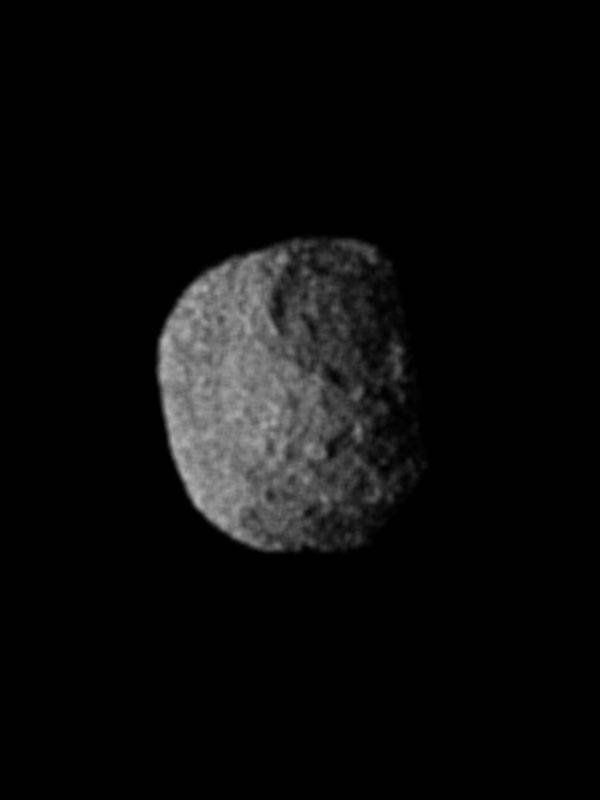
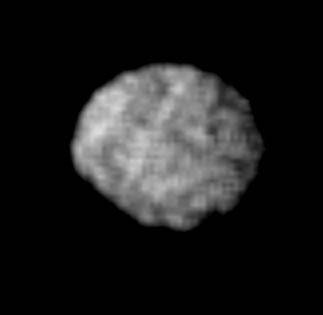
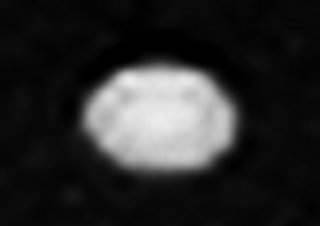
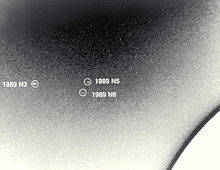
Voyager 2 images of several of Neptune’s small moons: (left to right) Proteus, Larissa, Despina, and a
group photo of Despina, Thalassa, and Naiad.
On Aug. 25, passing about 3,408 miles above Neptune’s north pole, Voyager 2 made its closest approach to any planet since leaving Earth in 1977. This close encounter trajectory allowed Voyager 2 to pass about 25,000 miles from Triton about five hours later. Triton was the last solid body the spacecraft explored and the encounter did not disappoint with several amazing discoveries. With relatively few impact craters, Triton’s surface is believed to be young, having been remodeled by melting. Despite Triton’s frigid -392o F surface temperature, Voyager’s images revealed evidence of geysers spewing dark material into the moon’s tenuous atmosphere that deposited back onto the surface. Voyager passed behind both Neptune and Triton, with instruments returning data about their atmospheres. The spacecraft also returned spectacular images of the two bodies backlit by the Sun. On its outbound journey, Voyager 2 continued to study Neptune until Oct. 2, 1989. In all, it had returned more than 9,000 images of the planet, its rings and its moons as well as a treasure trove of scientific information, tremendously increasing our knowledge of the most distant planet in the solar system.
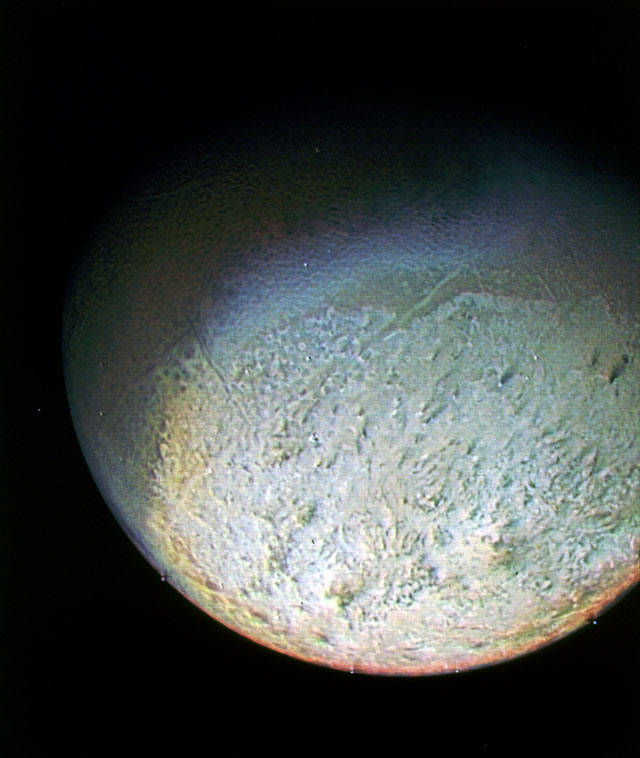
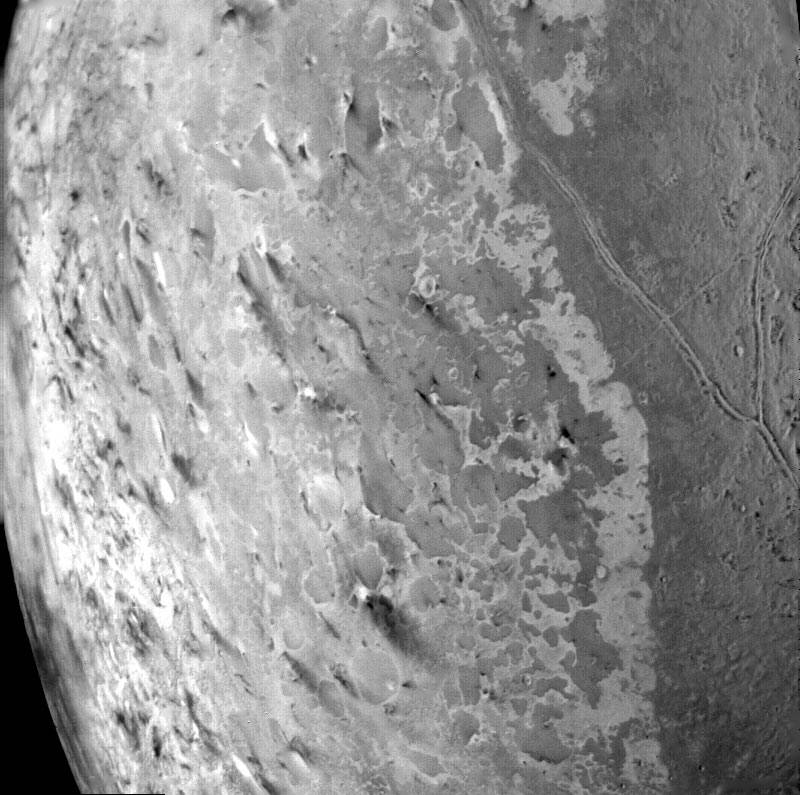
Left: Voyager 2 image of Triton from 330,000 miles away.
Right: Voyager 2 image of Triton’s south polar region – dark areas may be volcanic ice plumes.
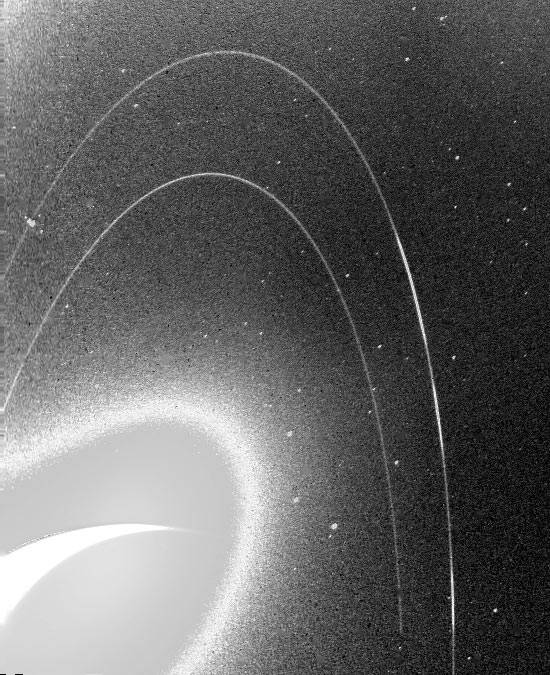
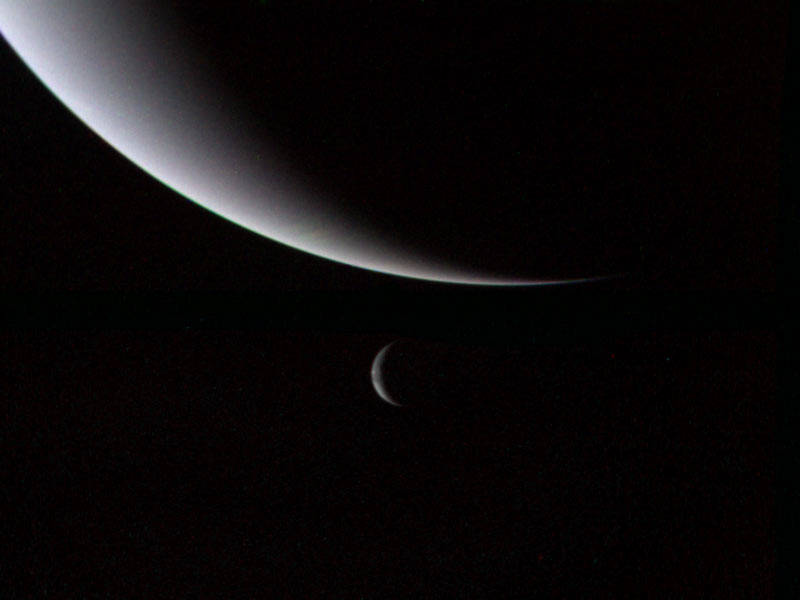
Left: Image of Neptune’s dark rings, with the planet intentionally overexposed.
Right: Parting shot of Neptune (at top) and Triton taken three days after Voyager 2’s flyby.
Following its reconnaissance of Neptune, Voyager 2 began its Interstellar Mission extension that continues to this day. Over the years, several of the spacecraft’s instruments have been turned off to conserve power, beginning with the imaging system in 1989, but it continues to return data about cosmic rays and the solar wind. On Nov. 5, 2018, six years after its twin, Voyager 2 crossed the heliopause, the boundary between the heliosphere, the bubble-like region of space created by the Sun, and the interstellar medium. It is expected that Voyager 2 will continue to return data from interstellar space until about 2025. And just in case it may one day be found by an alien intelligence, Voyager 2 like its twin carries a gold plated record that contains information about its home planet, including recordings of terrestrial sounds, music and greetings in 55 languages. Instructions on how to play the record are also included.
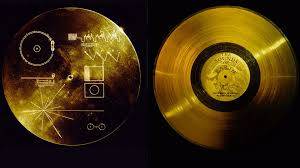
The gold disc carried by each Voyager.


























